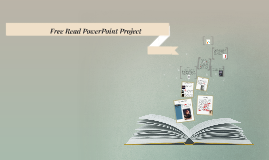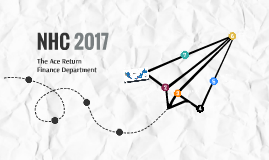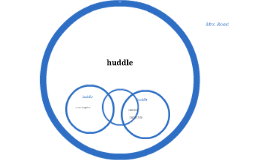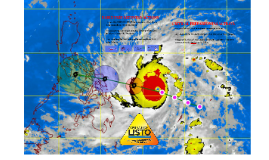Free Prezi Template
Transcript: The adsorption of contaminant molecules by catalysis The improvement of light absorption The improvement of charge separation and transportation ZnS QDs by precipitation method ( Zinc acetate, Sodium sulphide) ( T= 90º, t= 2h) (NaOH was used as a surfactant) (Low crystalyity) ZnS NPs by hydrothermal method ( Zinc chloride, Thioacetamide) (T=140º, t=5h) ZnS microspheres by hydrothermal method (Zinc chloride, Sodium thiosulfate) (T=180º, t=12h) The strongest material ever Optical Properties Synthesis of pure ZnS Secondary, the use of certain organic acids as additives (Formic acid) , in order to inhibit the growth of moulds, bacteria and yeasts. Graphite : narrow peak (2θ = 26.8º)(d=0.33 nm) ZnO nanorod : high intensity peak (002) (2θ = 34.331º) (JCPDS 00-001-1136) ZnS : sphalerite (111), (200), (220), (311) (JCPDS 00-001-0792) Graphite The mechanical and wear-resistance performance of the coating. 1 Morphology PL : The excessive of rGO can act a center for the recombination of electron-hole pairs instead of providing an electron pathway Solar cell device Synthesis of ZnS-based organic (graphene and polypyrrole) composite The intensity of the absorption peak of MB at 663 nm decreases with the increase of irradiation time D(%) = [(A(MB)0 - A(MB)t)/ A(MB)0] × 100 ZG-0 = 0.27% , ZG-1 = 59%, ZG-2 = 68%, ZG-3 = 79%, ZG-4 = 63% UV-vis absorbtion spectra Na2S + 2H2O 2NaOH + H2S (1) ZnO + H2S ZnS + H2O (2) Hummer's method Research Main Points The rule of graphene 300 times stronger than steel and much harder than diamond! Examples for nanomaterial that already used as a reinforcement in the coating XRD Pure ZnS QDs Publications Nanotechnology solutions hexagonal arrangement of carbon in layer stacked to each other One-pot synthesis Multi-step syntheis one-pot synthesis Multi-step synthesis synthesis of Graphene oxide nanosheets. ( Hummer's method) Graphene nanosheets (GNS) - Titanium dioxide composite Graphene Graphene : (2θ = 25.63º) PPy : amorphous (2θ = 26º) ZnS : Sphalerite ( 111), (220), (311) Insertion for a desired properties ZG-0 ( 0% GO), ZG-1 (0.5% GO), ZG-2 (1% GO), ZG-3 (1.5% GO), ZG-4 (2% GO) Synthesis of ZnS-based inorganic (ZnO-ZnS core-shell) composite Absorption XRD Characterization Morphology Synthesis of pure ZnS ZnO-ZnS core-shell nanostructure By Khaled El Sayed Mustafa The morphology of the core-shell structure is a mixture of round and rectangular shape Uv-vis absorption of ZnO-ZnS core-shell Photocatalytic measurement: Mild steel substrate XRD Characterization Improvement of high-surface area of catalysis (BET) Selective adsorption of the aromatic dye on the catalyst ( π electrons ) qe = ( Ci – Ce )V/m GO Intense and sharp peak ( 2θ = 10.6º ) (001) (d=0.83 nm) rGO very broad ( 2θ = 24.31º ) (002) ( d= 0.36 nm) very weak peak ( 2θ = 42.53º ) (100) ( d= 0.21 nm) ZG-0 Zinc blend ( 2θ = 28.609º, 33.153º, 47.591º, 56.473º, 59.227º, 69.583º, 76.894º ) (1 1 1), (2 0 0), (2 2 0), (3 1 1), (2 2 2), (4 0 0) and (3 3 1) ZG-0 Wurtzite ( 2θ = 27.081 ) Graphene : ideal ohmic ZnS nanoparticles : two fold light response, resistance of 3.23 × 10 23 Ωcm2 ZP : resistance of 2.81 × 10 23 Ωcm2 GZP : 1.35 × 10 23 Ω cm2 Hexagonal ZnO ZnS (111) Experimental XRD Characterization One-pot synthesis of ZnO-ZnS core-shell nanostructure Electrodeposition of rGO by Mg(NO3)2 Electrodeposition of ZnO nanorod arrays (ZnCl2, KOH, 1mM) anealing on the high purify Argon gas Sulfidation process ( thioacetamide) Photocatalytic Silo Corrosion failure The Anticorrosion Effect of Ni- RGO -TiO2 Nanocomposite Coating on Mild Steel in Neutral Environment The ZnS shell with an estimated tickness of 18 nm is observed Cathodic Protection synthesis of graphene nanosheets ( microwave assisted t=5min, 15 micro liter Hydrazine) PPy nanotube ( Pyrrol monomer, Fecl3, Methylene orange as a template) A red shift and increase in absorption edge of the UV-Vis spectra of ZnS were observed in the presence of graphene. The PL emission of ZnS-graphene decreased compared to the pure ZnS due to the presence of graphene the PL emission of the ZnO-ZnS core-shell nanostructure decreased due to the presense of ZnS shell and formation of type-II band alignment structure in the hetero-interface which is beneficial for solar cell devices. The presence of rGO in ZnS-rGO composite gives significant improvement in the degradation of methylene blue under visible light irradiation compared to pure ZnS, due to the increased adsorption of the dye, decrease in the band gap and stepwise structure of the energy levels in the composite. The presence of graphene and PPy in the GZP turnary composite lead to higher photocurrent response due to the creation of an interfacial separation between the graphene and the PPy by ZnS nanoparticles, which act as a bridge, and due to enhanced charge transport by graphene. ZnS microsphere-rGO composite Corrosion Inhibitors Crystal structure Bridging effect Charge separation Research Assistant Environmental Modifications Pt foil a counter

















